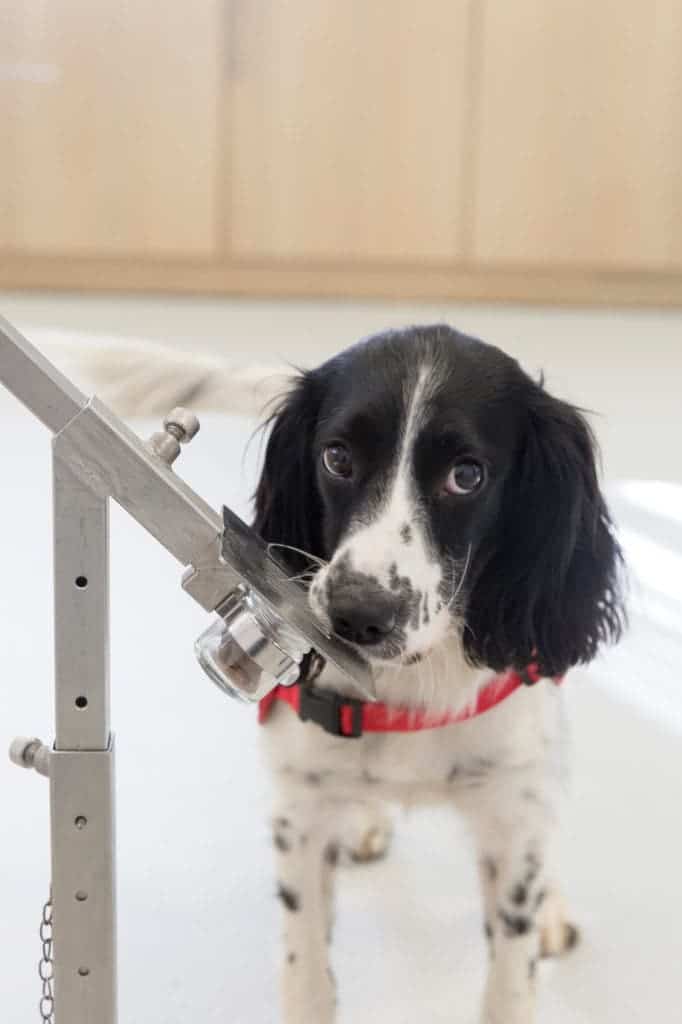Dogs have showcased their amazing sniffing abilities once again — this time, by identifying malaria cases on the spot and aiding or potentially replacing more expensive and time-consuming tests.

Freya, a Springer Spaniel, is among the dogs who have been trained to sniff out the scent of malaria. Freya’s highly sensitive nose could help provide the first non-invasive test for malaria. Sniffer dogs could potentially be deployed at ports of entry to identify passengers carrying malaria to prevent the spread of the disease across borders and to ensure people receive timely antimalarial treatment. Image credits: Medical Detection Dogs.
The fight against malaria took massive strides from 2000 to 2015, when fatalities were reduced by more than 60 percent, saving almost 7 million lives and preventing more than 1 billion malaria cases. But things have somewhat stagnated.
This is where man’s best friend steps in.
There are several tests for malaria, generally consisting of a blood test. Now, researchers have shown that a simple dog sniff could work equally well, simplifying things and offering a low-cost alternative. It’s also the first non-invasive diagnosis available for malaria.
“People with malaria parasites generate distinct odors on their skin and our study found dogs, which have an incredibly sensitive sense of smell, can be trained to detect these odors even when it’s just on an article of clothing worn by an infected person,” said Steven Lindsay, a public health entomologist at in the Department of Biosciences at Durham University in the United Kingdom and the lead investigator on the study.
The test worked by having dogs sniff children’s’ socks, and was generally effective, though not flawless. Overall, 175 sock samples were from 30 malaria-positive children and 145 from uninfected children (as verified with conventional tests). The dogs were successful in identifying 70% of the malaria-infected samples and 90% of the samples without malaria parasites.
Lindsay also adds that the dogs’ accuracy rate was slightly lowered because some children were carrying different types of malaria parasites. The accuracy rate could also be improved if the dogs are trained with fresh samples, instead of samples which were frozen over the duration of the training course (as was the case now).
Overall, with a bit more finessed training, the dogs could ultimately reach a level comparable to existing medical tests.
“While our findings are at an early stage, in principle we have shown that dogs could be trained to detect malaria infected people by their odour with a credible degree of accuracy,” says Professor Steve Lindsay, lead author. “This could provide a non-invasive way of screening for the disease at ports of entry in a similar way to how sniffer dogs are routinely used to detect fruit and vegetables or drugs at airports.”
“This could help prevent the spread of malaria to countries that have been declared malaria free and also ensure that people, many of whom might be unaware that they are infected with the malaria parasite, receive antimalarial drug treatment for the disease.”
Even if the dogs are a bit less accurate than medical tests, Lindsay said detection dogs could be used for narrowing the focus of clinical testing and treatment efforts. Detection dogs would operate best at ports of entry into countries which eliminated malaria or are close to elimination, as a sort of safety barrier. In the fight against malaria, we need all the help we can get.
Malaria is still one of the most dangerous diseases in the world. According to the World Malaria Report 2016, there were 212 million cases of malaria globally in 2015 and 429,000 malaria deaths. These figures have remained somewhat constant in the past few years.
The findings will be presented at the 67th American Society of Tropical Medicine and Hygiene (ASTMH) Annual Meeting. The research was funded by the Bill & Melinda Gates Foundation.









